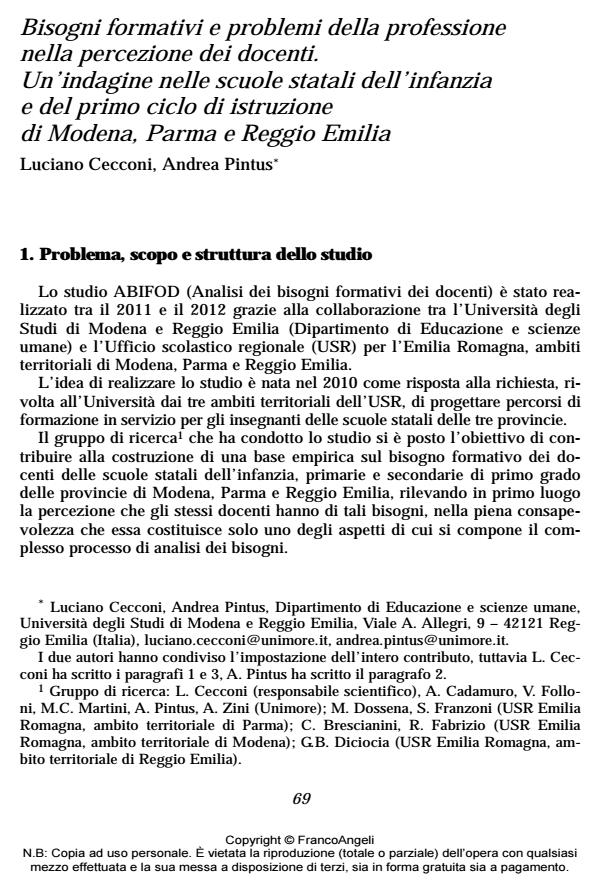Bisogni formativi e problemi della professione nella percezione dei docenti. Un’indagine nelle scuole statali dell’infanzia e del primo ciclo di istruzione di Modena, Parma e Reggio Emilia
Journal title CADMO
Author/s Luciano Cecconi, Andrea Pintus
Publishing Year 2014 Issue 2014/1
Language Italian Pages 20 P. 69-88 File size 96 KB
DOI 10.3280/CAD2014-001008
DOI is like a bar code for intellectual property: to have more infomation
click here
Below, you can see the article first page
If you want to buy this article in PDF format, you can do it, following the instructions to buy download credits

FrancoAngeli is member of Publishers International Linking Association, Inc (PILA), a not-for-profit association which run the CrossRef service enabling links to and from online scholarly content.
The quality of the school system depends on the quality of the teachers’ professional development. To improve the system quality professional development programs for teachers have been essentially important. This is proved to be true especially if these programs are based on knowledge of the teachers’ actual needs. Therefore, we carried out a needs analysis with teachers in Modena, Parma and Reggio Emilia (Italy) and this article presents the results of this study. The study is focused on subjective needs, i.e. needs that derive from the teachers themselves. An online questionnaire has been administered to 1926 teachers in public preschools, primary schools, and first grade secondary schools. Key findings of this survey have valuable implications for curriculum design. Several needs emerged as particularly relevant for the teachers, such as special education professional development, learning how to cope with children with special needs and students with behavioral problems.
Keywords: Needs analysis, subjective needs, professional development, teachers, school system.
- Assessing Teacher Well-Being and Support Needs in Philippine Private Schools: Recommendations for Community-Based Wellness Programs Gian Derick Sevilla, Cheryl Cañezal, Janith Montalban, Ann Margaret Martin, Candice Chelsea de Castro, Mary Grace Serrato, in Journal of Interdisciplinary Perspectives /2025 pp.504
DOI: 10.69569/jip.2025.626
Luciano Cecconi, Andrea Pintus, Bisogni formativi e problemi della professione nella percezione dei docenti. Un’indagine nelle scuole statali dell’infanzia e del primo ciclo di istruzione di Modena, Parma e Reggio Emilia in "CADMO" 1/2014, pp 69-88, DOI: 10.3280/CAD2014-001008